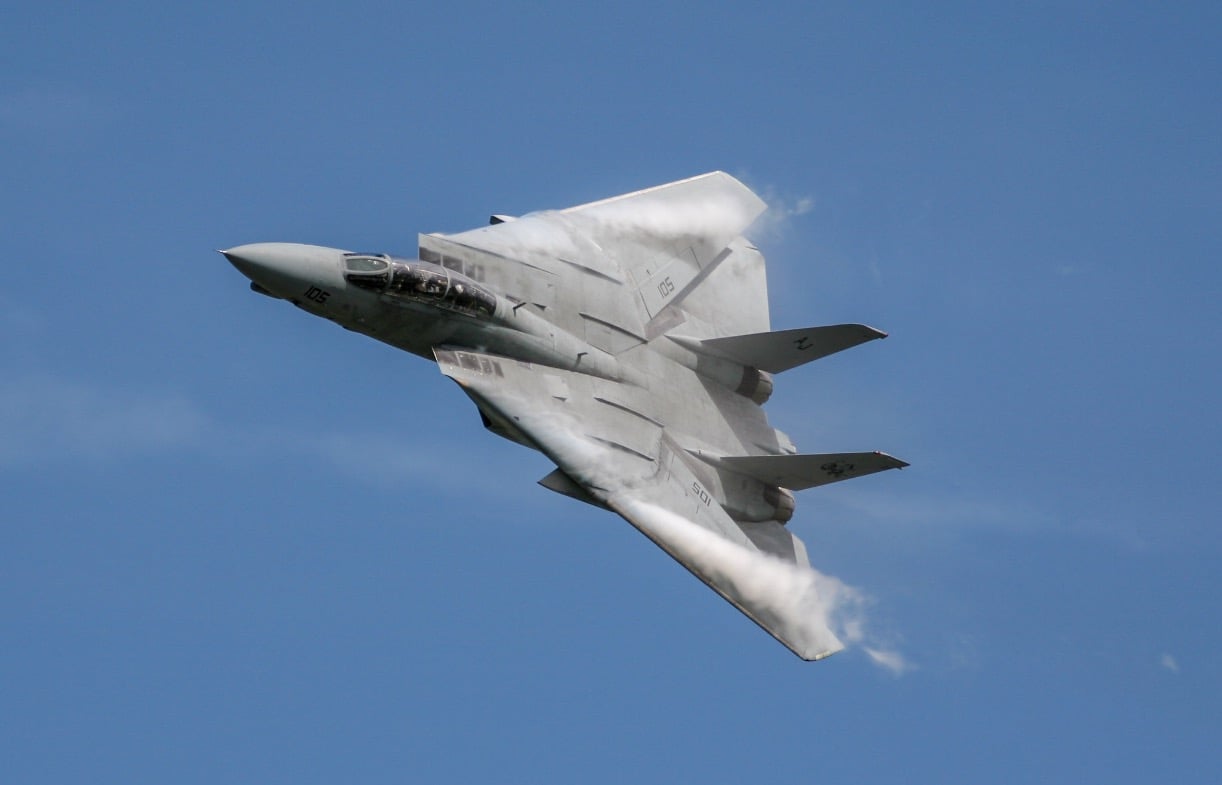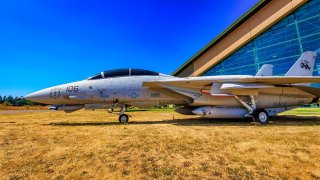The U.S. Navy's F-14 Tomcat Fighter Had 1 Ability It Can't Get Back
The Grumman F-14 Tomcat, immortalized in the 1986 film Top Gun, was one of the U.S. Navy’s finest aircraft. Known for its unmatched speed, combat range, and versatility, the F-14 could exceed Mach 2 and had a combat radius of over 1,800 miles. Indeed, that range is what the Navy misses today.
Summary and the Key Point You Need to Know: The Grumman F-14 Tomcat, immortalized in the 1986 film Top Gun, was one of the U.S. Navy’s finest aircraft. Known for its unmatched speed, combat range, and versatility, the F-14 could exceed Mach 2 and had a combat radius of over 1,800 miles. Indeed, that range is what the Navy misses today.
-Its AIM-54 Phoenix missile system and AWG-9 radar gave it unparalleled air superiority and defense capabilities.
-The Tomcat excelled in various roles, including air-to-air combat and reconnaissance during conflicts like Operation Desert Storm. Despite its retirement in 2006, the F-14 remains one of the greatest warplanes ever built, with no true successor matching its legacy.
From Top Gun to Desert Storm: The F-14 Tomcat’s Stellar Combat Record
“Do you feel the need for speed?” That is the iconic question asked in the 1980s smash hit, all-American, pro-military action film, Top Gun. While the film is memorable for catapulting Tom Cruise’s career, the real star was the Grumman F-14 Tomcat.
Back then, the F-14 was the finest naval warplane built. It was an air superiority fighter as well as an air interceptor that could defend its carrier battle group against anything the Soviet Red Fleet would throw its way.
The F-14 will indeed answer a pilot’s need for speed. F-14s could reach top cruising speeds exceeding Mach 2.
But a more apt question to ask about the Tomcat is whether you fully appreciate its range – this was the F-14’s greatest advantage. With its powerful engines, the F-14 had an unbeatable combat radius of 1,841 miles.
What’s more, with her onboard armaments package, the F-14 was able to engage enemies over the horizon at 90 miles away.
Weapons
The AIM-54 Phoenix missile was the F-14’s long arm that could reach out and obliterate targets far afield. Indeed, the AIM-54 allowed for an F-14 pilot and electronic countermeasures officer to engage multiple targets at long distances – a feature no other warplane had at that time.
In terms of fleet air defense, a key role the F-14 played throughout its legendary service as the U.S. Navy’s premier carrier-based warbird, it had a next-level radar system, the AWG-9. The onboard radar could track up to 24 targets at once and engage six simultaneously with the AIM-54 Phoenix long-range, air-to-air missile.
Mission Sets for F-14
F-14s conducted air-to-air missions ranging from offensive to defensive (protecting an aircraft carrier group from enemies). It could transition to air-to-ground attack missions, too. The versatility was unmatched for its time.
The design of the bird itself was unique. It had variable-sweep wings that gave the F-14 optimal performance at basically any level of altitude. These wings made the F-14 perfect for carrier flight operations.
When the F-14 was deployed on high-speed intercept missions, the wings were swept back for maximum speed. When the warbird was engaged in lower-speed flight, her wings were swept forward.
Not only was it a movie star, but the F-14 Tomcat was a war hero. The iconic plane engaged in multiple conflicts across the span of its service to the fleet. Among its tours of duty, it performed during Operation Desert Storm.

During the campaign to dislodge Saddam Hussein’s army from Iraq’s oil-rich neighbor of Kuwait, the F-14 was deployed in both air superiority and reconnaissance roles. The F-14’s stellar performance ensured its place in the pantheon of great American warplanes. Indeed, this bird might be in the top three best American warbirds ever conceived, even ranking better than some Air Force warplanes.
A Bubble Canopy Cockpit
A final but important feature of this amazing plane was its cockpit, which was designed with the pilot’s need for complete situational awareness in mind. Specifically, the Navy employed a bubble canopy for its two-seat cockpit, which helped the crew in air-to-air combat situations.
The F-14 Tomcat is likely the best Navy warplane ever designed. When it was retired in 2006, naval aviators past and present were hit with a pang of regret at seeing the great bird make its final flight.
Nothing Quite Like It Today
The Navy toyed with purchasing a proposed follow-on aircraft to the F-14, the F-21 Super Tomcat. Ultimately, however, the Navy opted to rely on the F/A-18 Super Hornet. Today, they are transitioning from the Super Hornet to the F-35 Lighting II.
It should be noted, however, that not even the fifth-generation F-35 warplane can match the prowess and specific capabilities that the Navy enjoyed with the F-14. There are even some reports that the Navy has been supremely dissatisfied with the capabilities it lost after the final flight of the Tomcat in 2006.
Perhaps, one day, the Navy will rededicate their resources to building a true successor to the F-14, the greatest naval warplane ever built by the U.S. Navy.
Author Experience and Expertise: Brandon J. Weichert
Brandon J. Weichert, a National Interest national security analyst, is a former Congressional staffer and geopolitical analyst who is a contributor at The Washington Times, the Asia Times, and The-Pipeline. He is the author of Winning Space: How America Remains a Superpower, Biohacked: China’s Race to Control Life, and The Shadow War: Iran’s Quest for Supremacy. His next book, A Disaster of Our Own Making: How the West Lost Ukraine, is due October 22 from Encounter Books. Weichert can be followed via Twitter @WeTheBrandon.
All images are Creative Commons or Shutterstock.
From the Vault
Russia Freaked Out: Why the U.S. Navy 'Unretired' the Iowa-Class Battleships
Battleship vs. Battlecruiser: Iowa-Class vs. Russia's Kirov-Class (Who Wins?)


